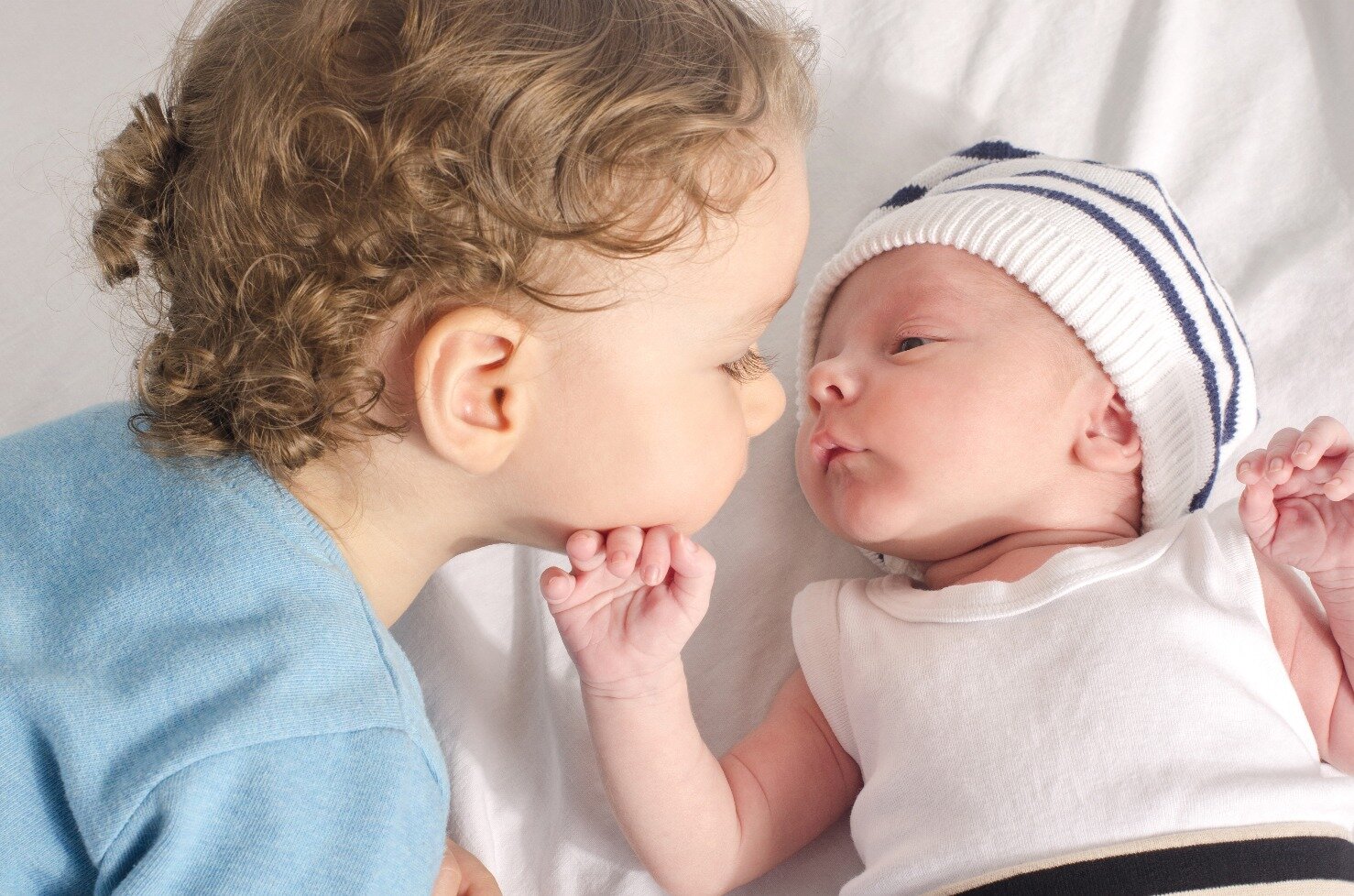
Development of Language: Ages Birth to Three
Maria Montessori was one of the earliest researchers to observe and describe in some detail the development of language in infants (see, for example, Montessori 1982/1949). She recognised that the foundation for language development is established before birth.
After birth, the innate human tendency to communicate with others drives infants to engage with the language used by those around them. Through observation, listening and interaction they learn the language and culture of their community. In the Montessori view, this development is related to the development of movement.
As infants become able to move about more and more, their field of interest and activity expands, and so does their need for language. The Montessori approach to language for this age group, therefore, starts not with the word but with the child's concrete experiences.
Language development in infants is described by Montessori educators as having the following two phases:
the prelinguistic phase from birth to twelve months when infants may not use words with meaning but are absorbing and internally constructing the rhythms and patterns of language, and training vocal muscles and auditory perception of the sounds of the language in the environment
the linguistic phase from twelve months to three years when infants progress from saying their first intentional words with meaning to complex phrases and simple sentences.
Initially, receptive language in infants is more developed than expressive language so they understand a great deal more than they can say. At about two years of age, the indirect and direct preparation of the pre-linguistic and early linguistic phases results in an ‘explosion’ into language.
At this time, instead of using single words and words fused together, young children suddenly combine words into grammatical patterns in order to express their meanings. From this point, language use typically expands rapidly.
In Montessori environments prepared for infants and toddlers Montessori early childhood educators strive to create an enriched language environment. Adults in the environment provide infants and toddlers with good models of language use at all times. They listen attentively, respectfully and responsively to all attempts made by the children in the environment to communicate. They also initiate interactions, ensuring language is directed toward the child, particularly during the pre-linguistic phase.
In the language-enriched Montessori environments children have many opportunities to expand their vocabulary and language use in their first language. They also benefit from hearing speakers of other languages if the use of other languages can be integrated meaningfully into the daily routine of the setting.
At this age, this works best for children if the adults in the environment each speak only one language to the children. For example, one adult speaks only English and another adult speaks only Chinese when interacting with the children.
Jump to section:
0.LA.010 Oral language acquisition and development
0.LA.020 Preparation of the hand for writing
Oral language acquisition and development 0.LA.010
Knowledge, Skills and Understanding
Typically, children will:
01. Communicate verbally and non-verbally
02. Use spoken language to make meaning, with support if needed
03. Link words and meanings
04. Increase and extend vocabulary
05. Extend language use from words to word groups, phrases and simple sentences
06. Explode into language around 2 years of age
07. Communicate confidently
+ Materials and Activity
Language-enrichment activities include:
being listened to attentively
varied, real, everyday activities that involve incidental language use
adults speaking directly to children, modelling language use children can understand and imitate
listening to and telling stories
questioning exercise
opportunities to speak and hold conversations with others
naming objects; naming pictures of objects; identical and similar matching of objects to cards including naming
fishing bags: general, classified and paired objects
songs, rhymes, games, finger plays, stories, poems
access to and being read to from quality children’s books.
Resources include:
an enriched language environment
good models of language use that children can understand and imitate if they wish.
Typically, children will:
08. Begin to use language appropriately in different situations to guide their own and others’ behaviour.
+ Materials and Activity
All activities in the environment offer and encourage vocabulary enrichment and language experience. Specific activities include:
seeking assistance
waiting
taking turns
helping another child or an adult
preparing food
making a contribution to the prepared environment.
Resources include:
- good models of language use and social interaction that children can understand and imitate if they wish.
Preparation of the hand for writing 0.LA.020
Knowledge, Skills and Understanding
Typically, children will:
01. Develop a pincer grip and good hand control
+ Materials and Activity
Activities include all practical life and fine motor movement activities including:
puzzles
hand/eye coordination activities
food preparation.
Resources include:
- functional objects and implements matched to the children’s size, strength and dexterity.
Typically, children will:
02. Learn how to hold and use a pencil, paint brush and needle
+ Materials and Activity
Activities include:
scribbling
gluing
painting
sewing.
Resources include:
- functional implements matched to the children’s size, strength and dexterity.
